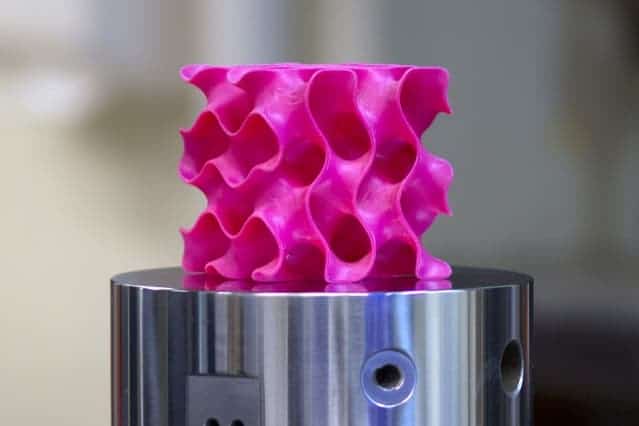The material is 10 times stronger than steel and is very light.

Photo: Melanie Gonick/MIT
The applications for graphene are diversifying. We already knew that the one-atom thick layer is extremely strong in its 2D form. But because it’s so thin, researchers are having a hard time translating that property into the 3D world. Now, Markus Buehler, the head of MIT’s Department of Civil and Environmental Engineering (CEE), and his team has managed to overcome that challenge.
They compressed small flakes of graphene through heat and pressure, producing a strong, stable structure which resembles corals. This structure is called a gyroid, a type of infinitely connected surface discovered in 1970/
“Once we created these 3-D structures, we wanted to see what’s the limit — what’s the strongest possible material we can produce,” says Zhao Qin, a CEE research scientist who also participated in the study.
They developed several 3D models, subjecting them to various strength and resistance tests. The computational simulations mimic the material very good. Finally, they found a structure which performed very well – “one of our samples has 5 percent the density of steel, but 10 times the strength,” Qin said. But creating a model doesn’t do much, and they had to actually build it. So they set out and created the 3D structure which is composed of surfaces curved under deformation, something similar to what would happen to sheets of paper. The configuration exhibited natural strength even at a very low density of five percent.
“This is an inspiring study on the mechanics of 3-D graphene assembly,” says Huajian Gao, a professor of engineering at Brown University, who was not involved in this work. “The combination of computational modeling with 3-D-printing-based experiments used in this paper is a powerful new approach in engineering research. It is impressive to see the scaling laws initially derived from nanoscale simulations resurface in macroscale experiments under the help of 3-D printing,” he says.
What makes this research even more significant is that it’s not limited to graphene – the key is the geometry, and you can use it for virtually all materials. Another big advantage of the structure is that it has a huge surface to volume ratio. This means that the potential applications are even broader, ranging from light concrete to filtration devices.
“You could either use the real graphene material or use the geometry we discovered with other materials, like polymers or metals,” Buehler says, to gain similar advantages of strength combined with advantages in cost, processing methods, or other material properties (such as transparency or electrical conductivity).
“You can replace the material itself with anything,” Buehler says. “The geometry is the dominant factor. It’s something that has the potential to transfer to many things.”
Journal Reference: Zhao Qin, Gang Seob Jung, Min Jeong Kang and Markus J. Buehler. The mechanics and design of a lightweight three-dimensional graphene assembly. DOI: 10.1126/sciadv.1601536






